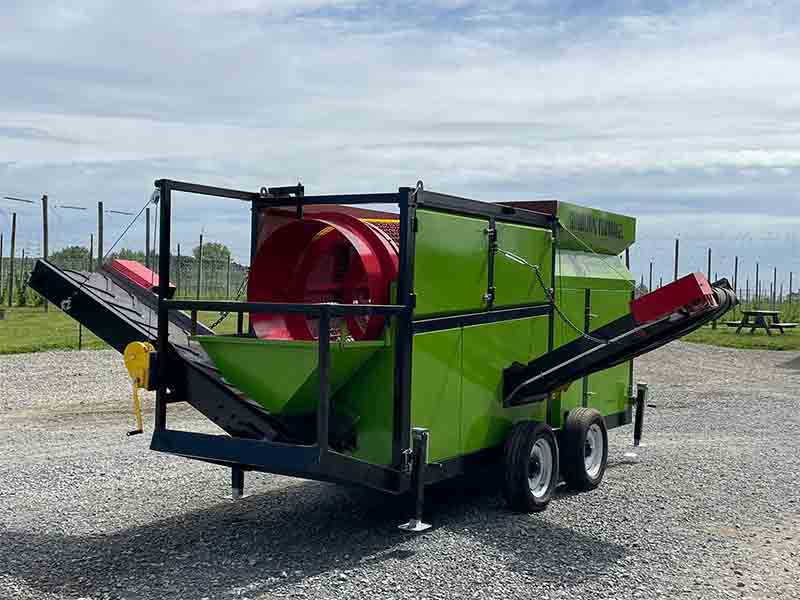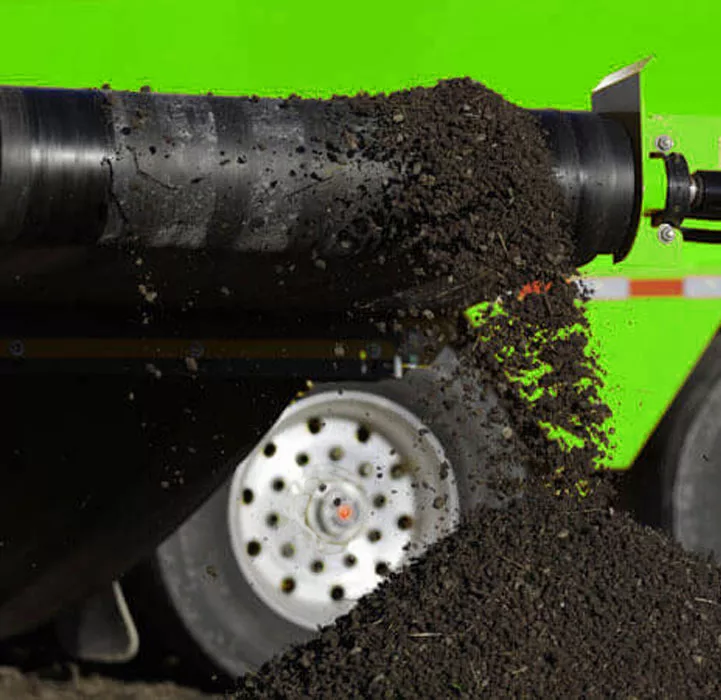If you are in the construction, landscaping, or agricultural industry, you know the importance of high-quality topsoil. However, raw topsoil often contains debris, rocks, and other unwanted materials. A topsoil screener is a crucial machine for separating these impurities, ensuring your topsoil is clean and ready for use. In this guide, we’ll explore the benefits, features, and applications of topsoil screeners.

Topsoil screener
A topsoil screener is a machine designed to separate topsoil from debris, rocks, and other materials. It uses gravity and a vibrating mesh screen to filter out unwanted particles, providing you with clean, fine topsoil. These machines come in various sizes and capacities, making them suitable for both small-scale and large-scale operations.

Features to Look for in a Topsoil Screener
When choosing a topsoil screener, consider the following features to ensure it meets your needs:
- Screen Size and Type: The size of the screen mesh determines the size of the particles that can pass through. Adjustable screens allow you to customize the size of the screened material.
- Portability: If you need to move the screener to different job sites, look for a model with wheels or a trailer hitch.
- Capacity: Choose a screener with a capacity that matches your workload. For larger operations, a high-capacity screener will save you time.
- Durability: Ensure the machine is built with robust materials to withstand heavy use and harsh conditions.
- Ease of Maintenance: Machines with accessible parts and simple cleaning processes reduce downtime and extend the screener’s lifespan.
Applications of Topsoil Screeners
Topsoil screeners are versatile machines used in various industries:
- Landscaping: Screened topsoil is essential for creating smooth, level lawns and gardens.
- Construction: Contractors use topsoil screeners to prepare the ground for building foundations and other structures.
- Agriculture: Farmers screen topsoil to remove rocks and debris, ensuring better crop yields.
- Composting: Screeners help in processing compost, separating fine compost from larger, undecomposed materials.
How to Use a Topsoil Screener
Using a topsoil screener is straightforward:
- Set Up the Screener: Place the machine on a level surface and secure it if necessary.
- Load the Topsoil: Use a loader or shovel to place the raw topsoil onto the screener’s feed hopper.
- Start the Machine: Turn on the screener and adjust the settings as needed for your material.
- Collect Screened Soil: The clean, screened topsoil will pass through the mesh, ready for use, while debris and larger particles are separated out.
Conclusion
A topsoil screener is an invaluable tool for anyone needing clean, debris-free soil. By improving soil quality and efficiency, these machines support a variety of applications in landscaping, construction, agriculture, and composting. When choosing a topsoil screener, consider features like screen size, portability, capacity, durability, and ease of maintenance to find the best machine for your needs.
Invest in a topsoil screener today and experience the benefits of high-quality, screened topsoil for your projects.
